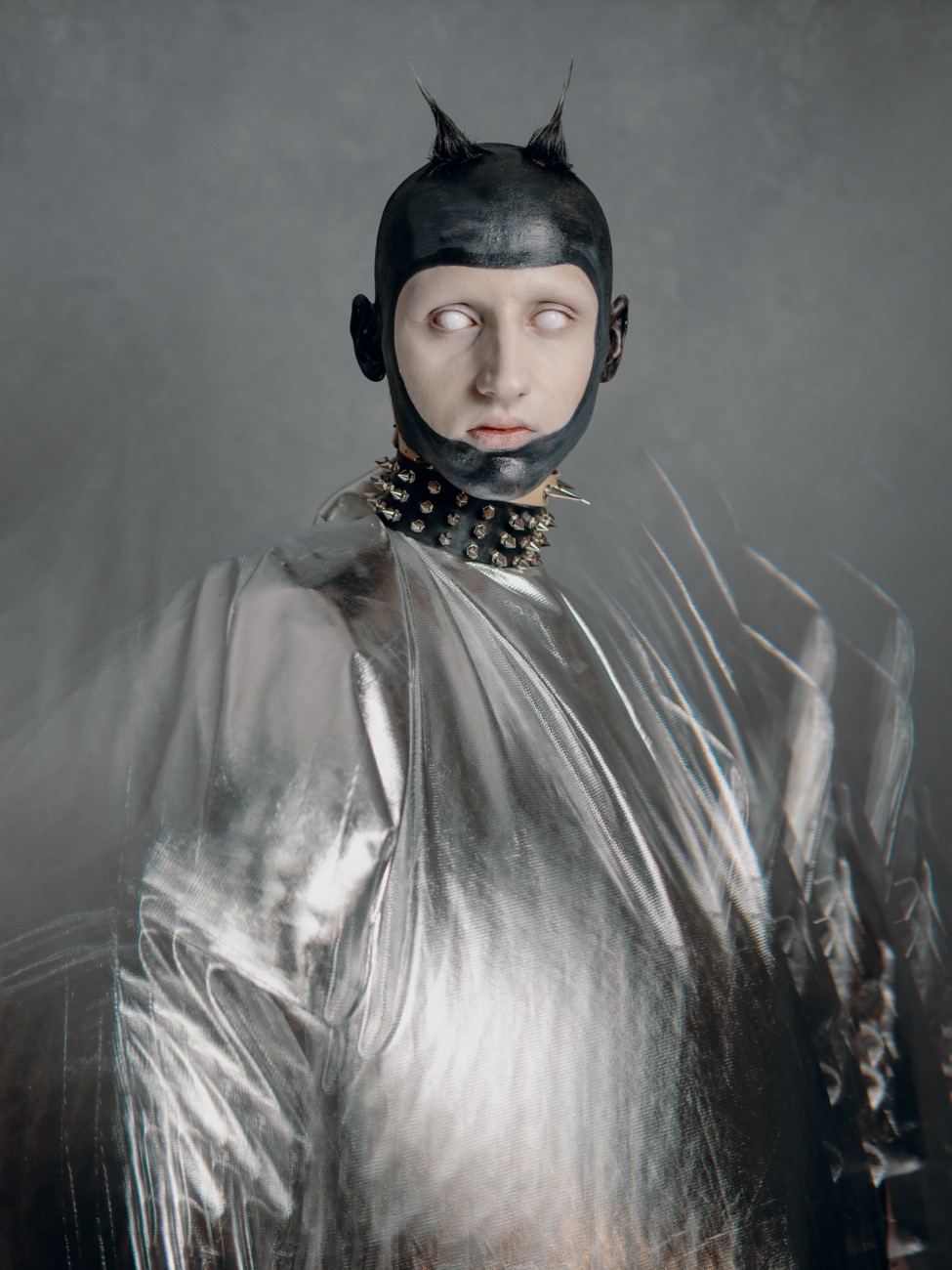The photos are very much a collaborative process between myself and the subject. You have to try and get on the same level, which can be challenging in a short time frame when you often can barely hear each other over the sound of the club’s sound system. I see the photos as part of fine art portraiture and part of documentary photography. It’s actually the documentary nature of the photos that drive me to keep taking the photos – I think it will be interesting in 20 plus years in time to look back on them and see how people were dressing in clubs and in the late-night corners of the city at this time.
How has your background as a graphic designer influenced your practice as a photographer?
I don’t think my background as a graphic designer has influenced my photography that much, although working in theater, you’re often trying to get to the heart of a production’s story and attempting to convey that through imagery so maybe there is a through-line between the two. It is quite coincidental that as a graphic designer I work in theater and there’s a fair bit of theatricality in the subjects of my photos. But I’m often reminded of the stark difference between the theater of the stage and the theater of the street, when “dressing up” for a stage piece you’re very much insulated from the outside world and in a safe bubble, but the reality of dressing up in the way of many people in the photos means you will often be on the receiving end of both verbal and physical harassment. Many people in the photos will arrive at venues on public transport and it’s sadly all too common to hear of traumatic experiences that they’ve endured on the way to the club or on the way home and this is a common experience for many of the people who dress up like this on a regular and sometimes daily basis.
Where should our readers go out in London to meet the artists in your photography?
In London there are new parties popping up all the time and there’s no shortage of events depending on your tastes. There are clubs like Monster Queen, Wraith and Subversa, which are on the darker end of the scale as well as most of the nights that happen at Electrowerks. Then there are parties like KAOS, Inferno, Boudicca for a more queer techno experience, and you’ve got parties like Cookie Jar, or many of the events that happen at Dalston Superstore and The Glory that will satisfy all your drag cravings and Club Vanitas and Torture Garden for a more fetish orientated party. But really, there are so many parties and many I don’t go to because I’m lazy and will generally only go anywhere within bike riding distance from my home that has room enough for me to set up my equipment.
What are you working on at the moment?
I’m working on my second book. I have 6 years worth of photographs since my first book came out that I’m trying to hammer into some sort of form and shopping around for a publisher. At the moment, I’m also just enjoying being able to go out and take photos again after things have shut down and enduring various stutters on the path to reopening. During the first lockdown, I undertook a project of photographing people around the world remotely on my iPad, but nothing quite beats the in-person process and collaboration of making a portrait in the same physical space.
 https://www.nastymagazine.com/wp-content/uploads/2021/09/Spiros-Hadjiidjanos-nasty-magazine-017.jpg
843
1500
admin
https://www.nastymagazine.com/wp-content/uploads/2015/02/new-logo-basker-WHITE4.png
admin2021-09-22 12:12:152021-09-21 12:27:31Spiros Hadjiidjanos / Multilayered entities
https://www.nastymagazine.com/wp-content/uploads/2021/09/Spiros-Hadjiidjanos-nasty-magazine-017.jpg
843
1500
admin
https://www.nastymagazine.com/wp-content/uploads/2015/02/new-logo-basker-WHITE4.png
admin2021-09-22 12:12:152021-09-21 12:27:31Spiros Hadjiidjanos / Multilayered entities


















